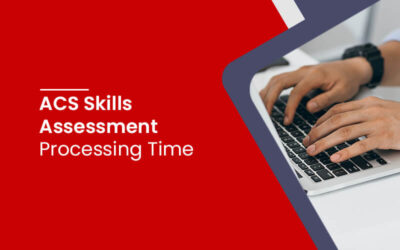Why is an employment reference letter necessary for an RPL report?

Table of Contents
Do you wish to apply for Skilled Migration to Australia as an ICT professional but don’t have the required ICT qualifications? Then a great employment reference letter can help you demonstrate your knowledge and abilities in the selected field of profession.
An employment reference letter, also known as a recommendation letter, is a written document that details an individual’s professional abilities, work, and experiences, emphasizing their capacity to perform certain responsibilities. Candidates who do not have an ICT qualification must submit an RPL project report and an employment reference letter to the Australian Computer Society (ACS). Consequently, candidates with non-ICT degrees can demonstrate their expertise and receive favourable ratings in the ACS Skills Assessment. ACS evaluates the abilities of candidates based on their knowledge, skills, and job experience.
Employee reference code Australia
Candidates with non-ICT degrees or insufficient ICT qualifications must submit the RPL project report to the Australian Computer Society (ACS) together with an employment reference letter to demonstrate their competence and be positively assessed in the ACS Skills Assessment. It displays the candidate’s job experience and skill in the field of profession mentioned. It comprises a thorough work history of at least seven years in the chosen occupation, making it eligible for the ACS RPL Application. The following factors influence RPL reports:
- On-job training, any employment did overseas or inside Australia( paid and unpaid)
- Other credentials obtained in Australia or abroad, Hobbies, sports, and leisure activities, as well as community or voluntary labour.
Basic Rules for writing an Employment reference letter
Work experience must be at an expert ICT level and relevant to the specified occupation to be surveyed as appropriate for migration skills evaluation. The following are the rules for employment reference letters:
- Dates in the format DD/MM/YYYY are used throughout the project.
- Job in the specified field of employment
- Duties performed during your employment period.
- Previous jobs and responsibilities should be mentioned if applicable.
- Working hours – full-time vs. part-time, as well as weekly hours, worked.
- Indicate the country where the work was completed.
- The name of the approved individual appears on the organization’s letterhead (digital signatures acceptable and must be verifiable)
Tips and tricks on writing your employment reference letter
- To be considered acceptable, work experience must be at a professional ICT level and relevant to the selected occupation (ANZSCO).
- Make sure you have enough job experience before applying for the Skills Assessment. The ACS has set criteria for determining the minimal amount of work experience required to meet the skill level norms.
- Work experience obtained after meeting the skill level criterion is called Skilled Employment and is eligible for migration points.
- Individuals with past work experience who do not meet the skill level standards are not considered skilled and eligible for migration points. And your RPL will be evaluated as “Unsuitable due to insufficient experience.”
- Provide each employee’s start and end dates in DD/MM/YY format in an employment reference letter. Use the term “To Date” and mention the date the reference was written if your job title is “Current.”
- In your reference letter, you can list as many work tasks as you like. However, ensure that the duties allocated to you are related to your chosen career. At least 65 percent of the duties mentioned in the job reference must be relevant to the proposed occupation for the experience to be closely related to the nominated occupation (ANZSCO). If not, the reference will be noted as “Inappropriate due to a lack of information.”
- Work completed as part of a qualification is not considered skilled work and will be categorized as “Concurrent Employment.”
- Full-time employment necessitates at least 20 hours each week. So, whether you include full-time or part-time jobs in the reference, make sure you meet the criteria and specifically indicate the worked hours in the reference letter.
- All references must include specific information from your employer regarding the tasks you completed and the skills you used on the job. References that do not provide exact work specifications will be graded as “Unsuitable due to a lack of information.”
- Don’t forget to provide the name of the nation where the work was done. If you have worked for one firm in numerous countries, the employment reference must include the precise dates and places where you worked.
- Your supervisor or someone authorized by your organization must sign the Employment Reference letter. The individual being referred to’s name, position, and contact information must be mentioned explicitly.
- An authorized notary shall certify the reference as a true copy. For the ACS Skills Assessment, only a certified copy of the work reference letter is accepted.
- In the reference letter, include examples of your actual work and experience. Never plagiarize from other people’s work.
- Because your work reference is proof of your expertise, strive to be more specific to the selected occupation and explain the employment tasks and obligations you accomplished in the field that shows your strong points.
Seek Professional Advice from CDRWritersAustralia
CDR writers Australia has a professional ICT specialist that can aid you in completing your RPL report. We provide Employment reference letters for Australia as well as comprehensive RPL report preparation. Your project reports will serve as the foundation for all subsequent reports.
Recent Posts
- Benefits of RPL Writing for Professional Advancement—Seize the Opportunity! July 8, 2024
- Unlocking Your Potential: Benefits of NER Registration for Engineers—Don’t miss out! July 4, 2024
- 8 Advantages of being a Registered NER Engineer April 25, 2024
- Stage 1 Competency Standard for Professional Engineer December 4, 2023
- Secure Your Future: The Most In Demand Jobs for Skilled Migrants to Australia in 2024 November 3, 2023






